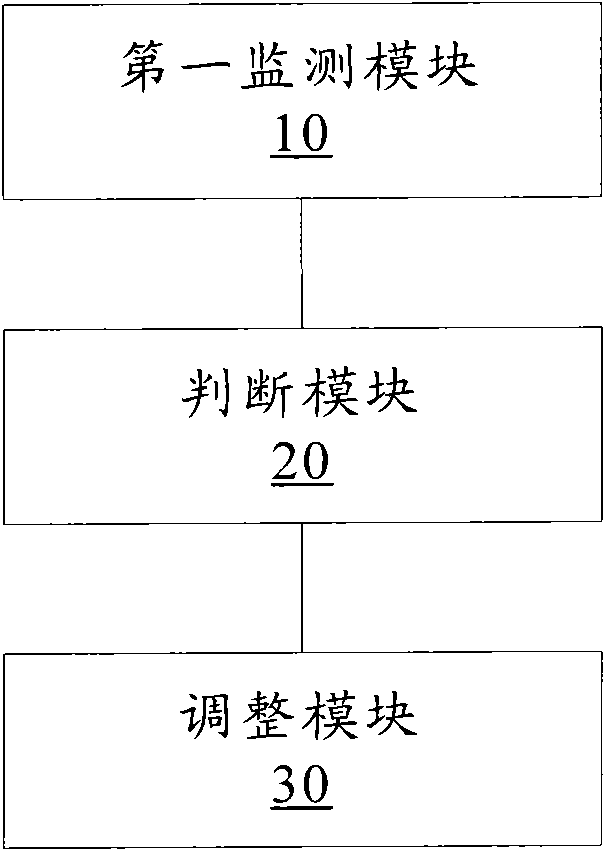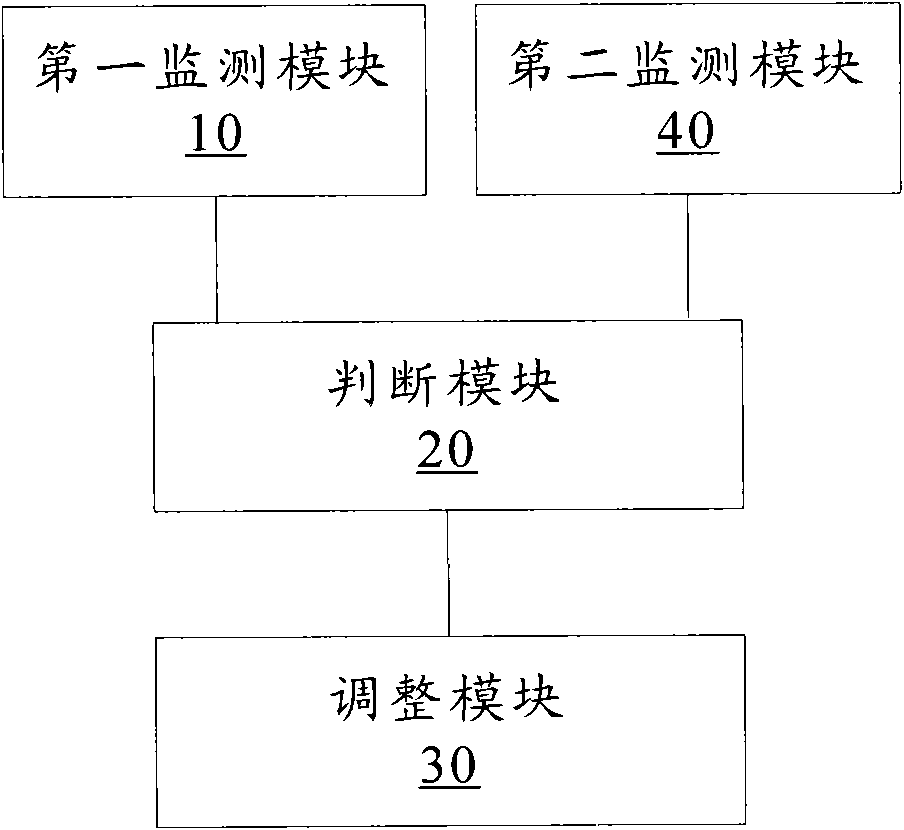Wireless access point and radio-frequency emission power regulation method thereof
A technology of radio frequency transmission power and wireless access point, which is applied in the field of communication, can solve the problems of slow network process, small radio frequency coverage, and reduced user experience, so as to achieve the effect of reducing radio frequency transmission power and reducing overall energy consumption
- Summary
- Abstract
- Description
- Claims
- Application Information
AI Technical Summary
Problems solved by technology
Method used
Image
Examples
Embodiment 1
[0019] figure 1 It is a schematic structural diagram of a wireless access point according to Embodiment 1 of the present invention, the wireless access point includes: a first monitoring module 10, configured to continuously monitor the packet loss rate of a workstation associated to the wireless access point; a judging module 20 , for judging whether the packet loss rate currently monitored by the first monitoring module 10 is less than the first threshold, if so, triggering the adjustment module 30 to reduce the radio frequency transmission power of the wireless access point step by step; the adjustment module 30 is used for The radio frequency transmission power of the wireless access point is adjusted according to the trigger of the judging module 20 .
[0020] In related technologies, methods such as increasing Beacon Interval, simply reducing radio frequency transmission power, or stopping part of PA work are used to reduce the energy consumption of wireless APs. These m...
Embodiment 2
[0040] Figure 5 It is a schematic diagram of an application scenario according to Embodiment 2 of the present invention. In this embodiment, there is only one workstation (STA) associated with a wireless access point. When the STA moves from position 1 to position 2 and then to position 3, when When the STA approaches the wireless AP, the wireless AP reduces the radio frequency transmission power according to the received signal strength and the statistical packet loss rate. When the STA is far away from the wireless AP, the wireless AP detects that the received signal strength is deteriorating, and the statistical packet loss rate increases and exceeds the threshold, then increase the RF transmission power until the packet loss rate returns to normal, or enter the full power state.
[0041] Figure 6 It is a flowchart of a method for adjusting radio frequency transmission power of a wireless AP according to Embodiment 2 of the present invention, which mainly includes the fo...
Embodiment 3
[0052] Figure 7 It is a schematic diagram of an application scenario according to Embodiment 2 of the present invention. In this embodiment, STAs associated with a wireless access point include: STA1, STA2, and STA3.
[0053] Figure 8 It is a flowchart of a method for adjusting radio frequency transmission power of a wireless AP according to Embodiment 3 of the present invention, which mainly includes the following steps:
[0054] Step S801, the wireless AP starts to enter the full power operation state, that is, the current radio frequency transmission power of the wireless AP is its maximum radio frequency transmission power;
[0055] Step S802, STA1, STA2, and STA3 are associated to the wireless AP, and the wireless AP counts the packet loss rate with each STA, and obtains the current received signal strength of each STA;
[0056] Step S803, the wireless AP judges whether the packet loss rate with each STA is less than the first threshold, if yes, execute step S804, oth...
PUM
 Login to View More
Login to View More Abstract
Description
Claims
Application Information
 Login to View More
Login to View More - R&D
- Intellectual Property
- Life Sciences
- Materials
- Tech Scout
- Unparalleled Data Quality
- Higher Quality Content
- 60% Fewer Hallucinations
Browse by: Latest US Patents, China's latest patents, Technical Efficacy Thesaurus, Application Domain, Technology Topic, Popular Technical Reports.
© 2025 PatSnap. All rights reserved.Legal|Privacy policy|Modern Slavery Act Transparency Statement|Sitemap|About US| Contact US: help@patsnap.com



